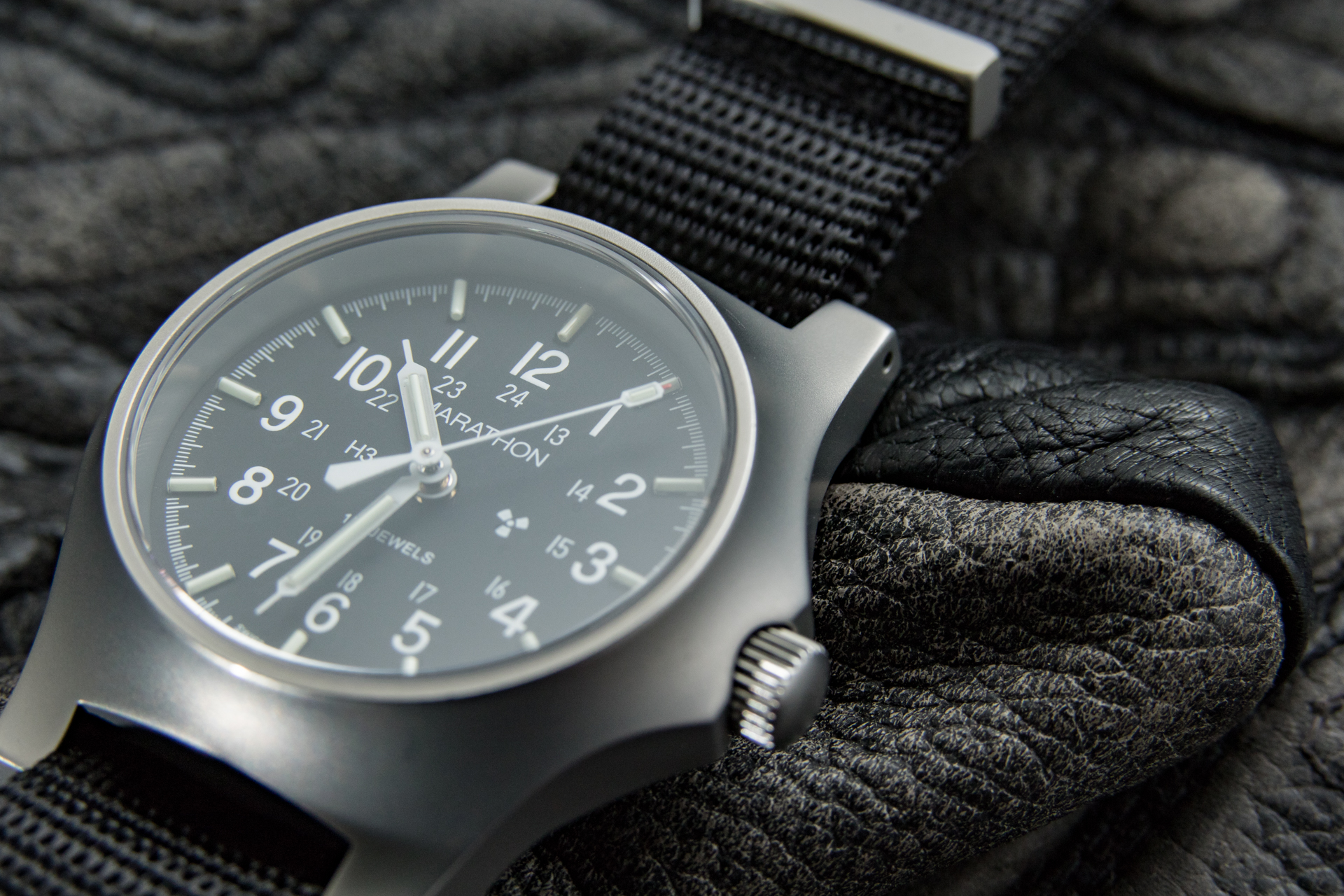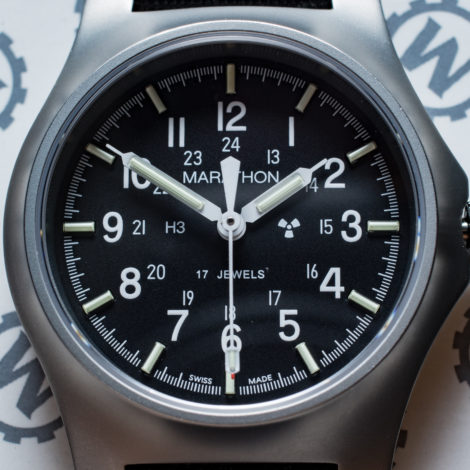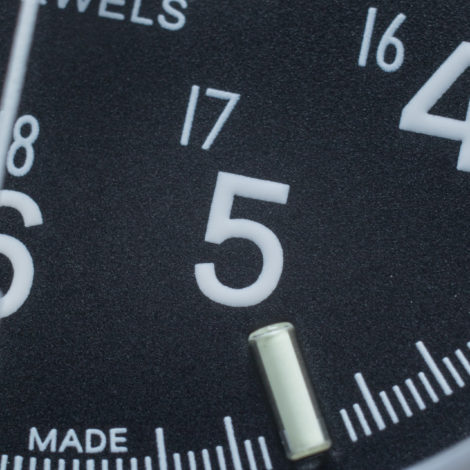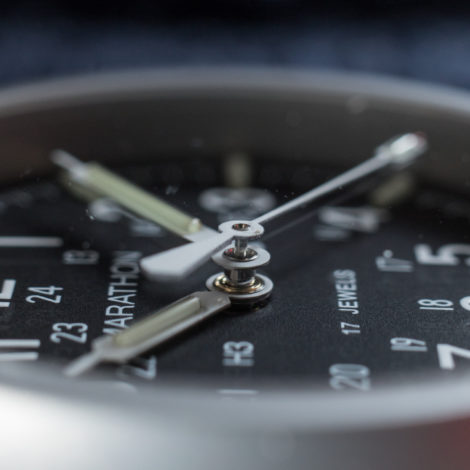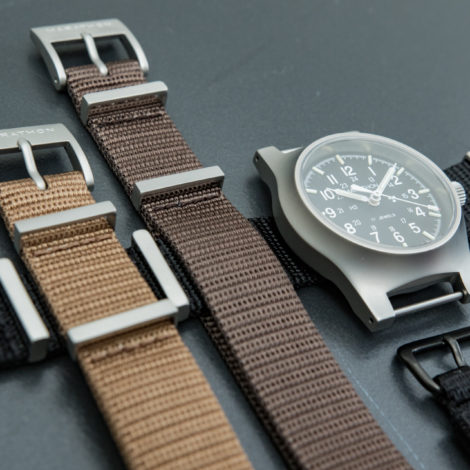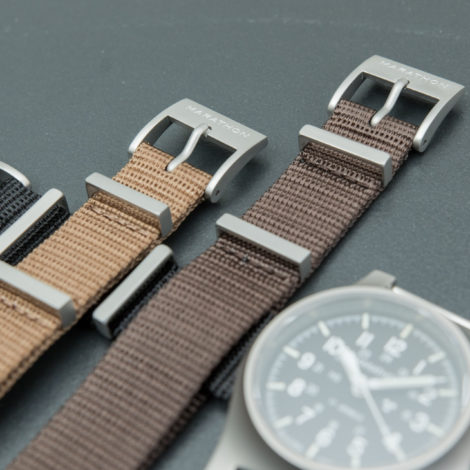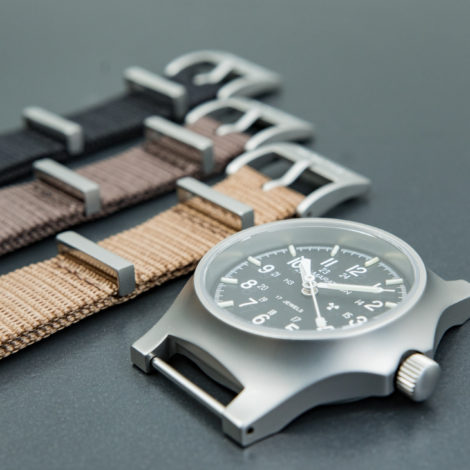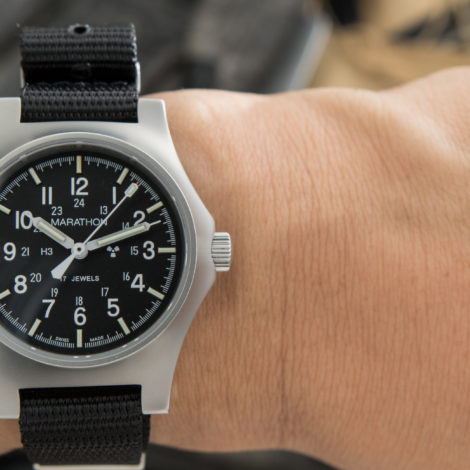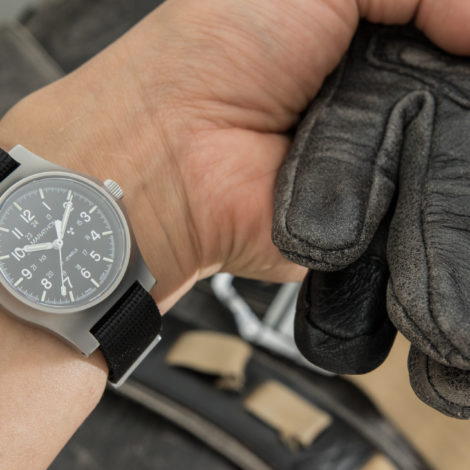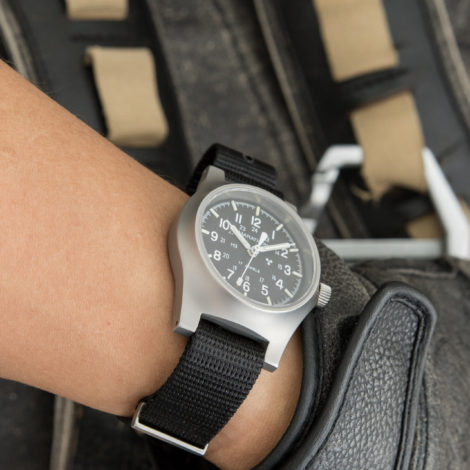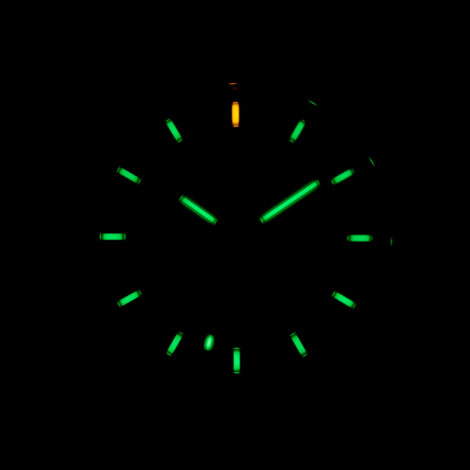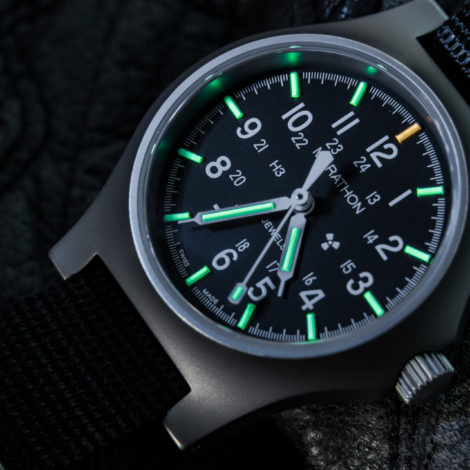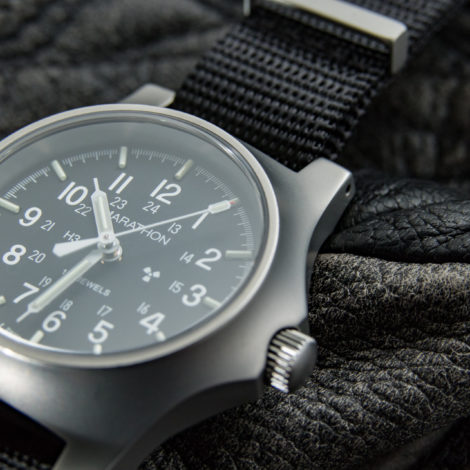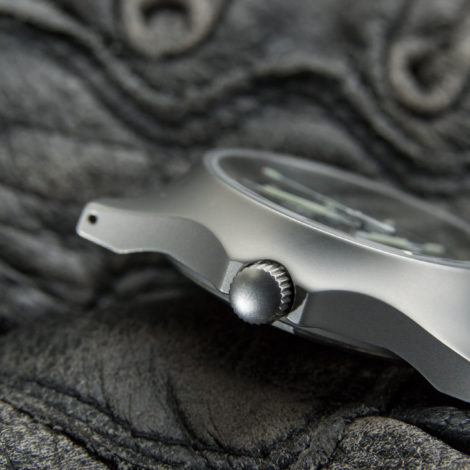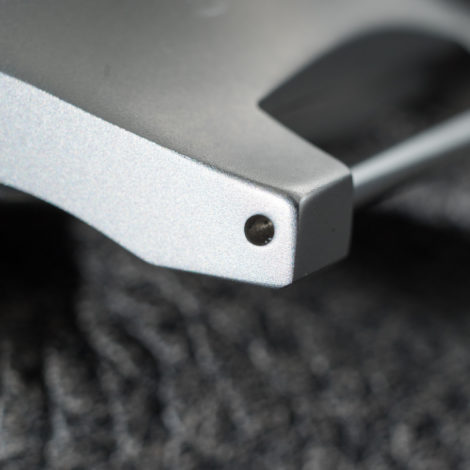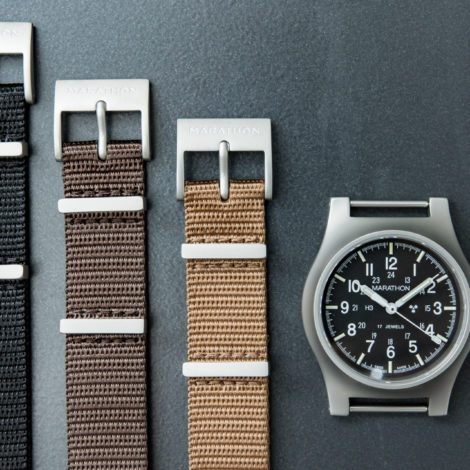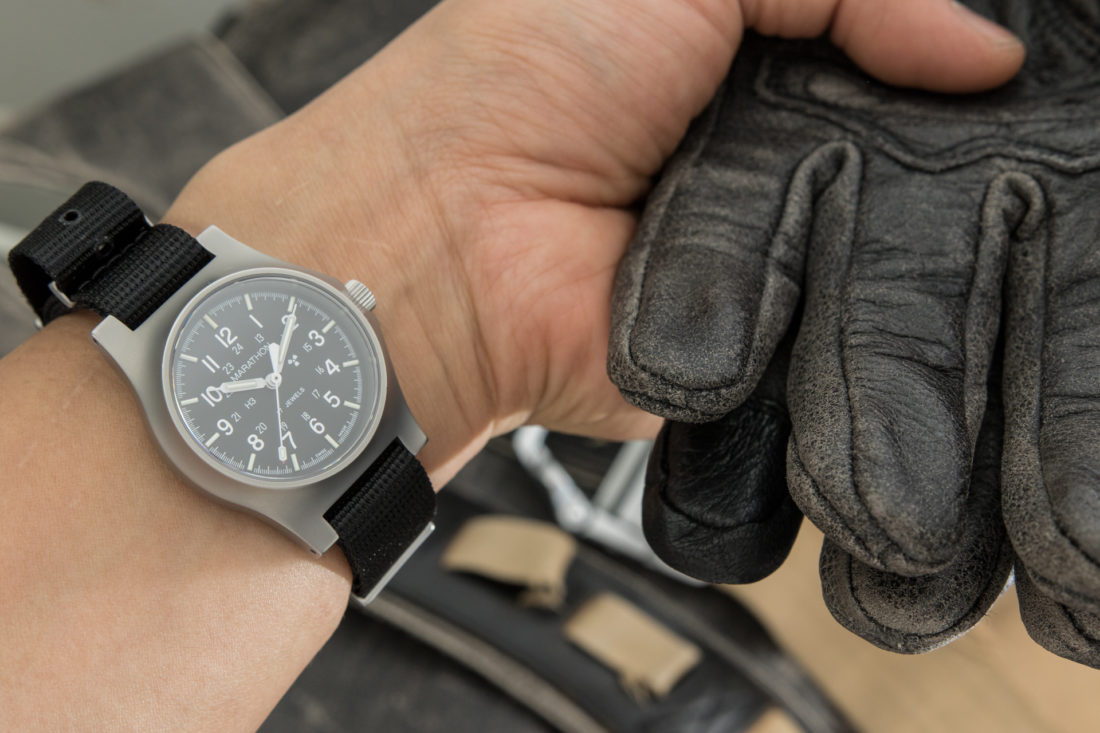
Field watches are simple. They are built with function over form in many respects, but these “simple” design elements can’t be disregarded, as they’ve influenced many of the watches we wear today. As an everyday watch with a mechanical movement, the Marathon GPM field watch may be one of the best designed and wearing tool watches from a utilitarian perspective. While it may not get high marks with regards to recent trends as well as distributive design and materials, it does serve a purpose, but not without some design flaws and shortcomings, possibly due to Mil-spec restrictions.
The Marathon GPM (General Purpose Mechanical) Field watch in steel is an updated version of their original 1980s military issue field watch which was contracted by the US Government, the GG-W-113. Prior to the GPM being released, Marathon released a version of its field watch as a GPQ (General Purpose Quartz), which has a fibershell case, ETA F06 quartz movement, and drilled lugs. The GPM more closely resembles the original military version with a “satinized” stainless steel case, and mechanical movement. While the GG-W-113 came with either a FHF-96 or Exelsior Park movement, the newest version is run by the ETA-2801 mechanical movement with a specially modified extra high cannon pinion height, and hacking seconds.
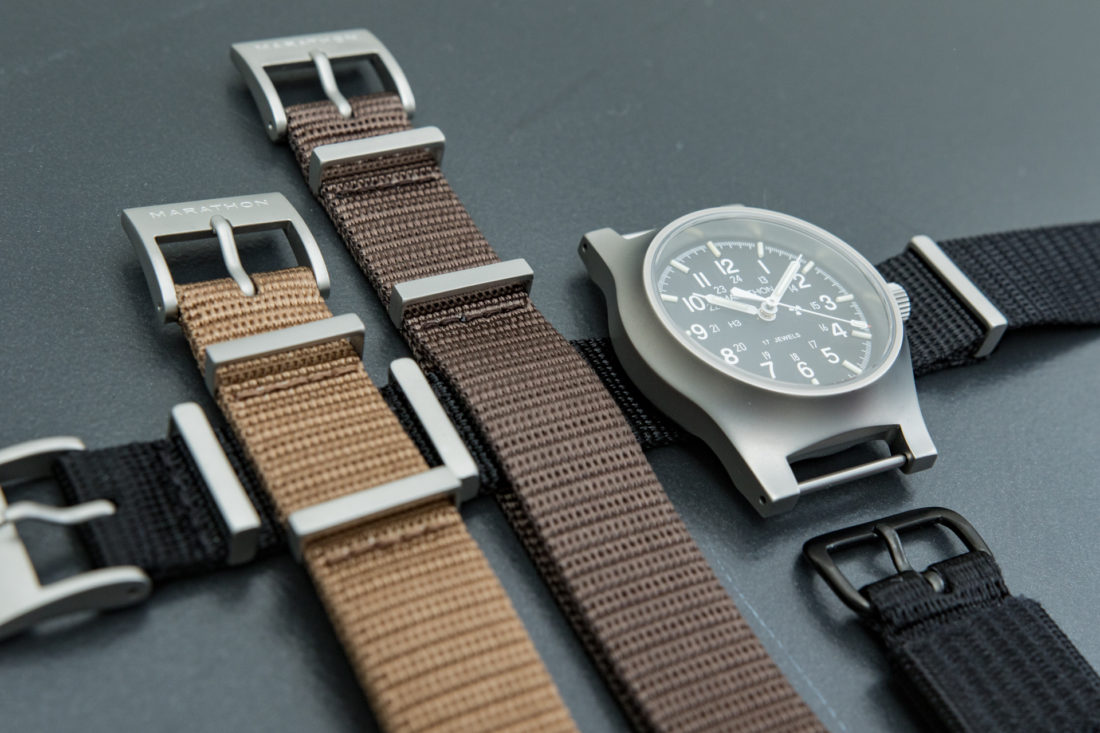
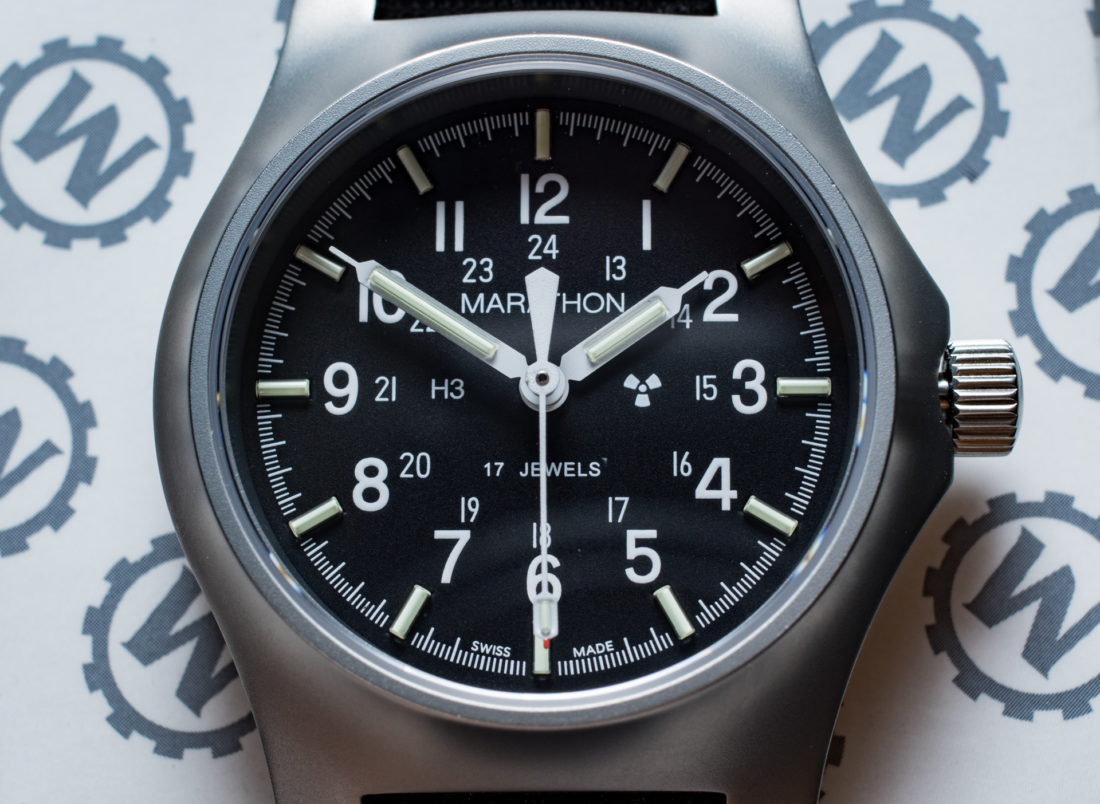
The mechanical hand-wound movement may have been a more accurate reissue of the original, but I would have much appreciated this watch had it come with an automatic self-winding movement, purely based on functionality and everyday wear. I constantly found myself “frozen in time” because the 40-hour reserve would empty about mid way through the second day since its last winding. The omission of a rotor could mean that the addition would have significantly changed the case dimensions causing it to be mis-proportioned or difficult to wear under a cuff or jacket. Another reason could be for durability, reliability, and maintenance reasons since this is your standard field watch that needed to be repaired on the field, be relatively easy to maintain, and cost-effective in case it was lost or damaged beyond repair.
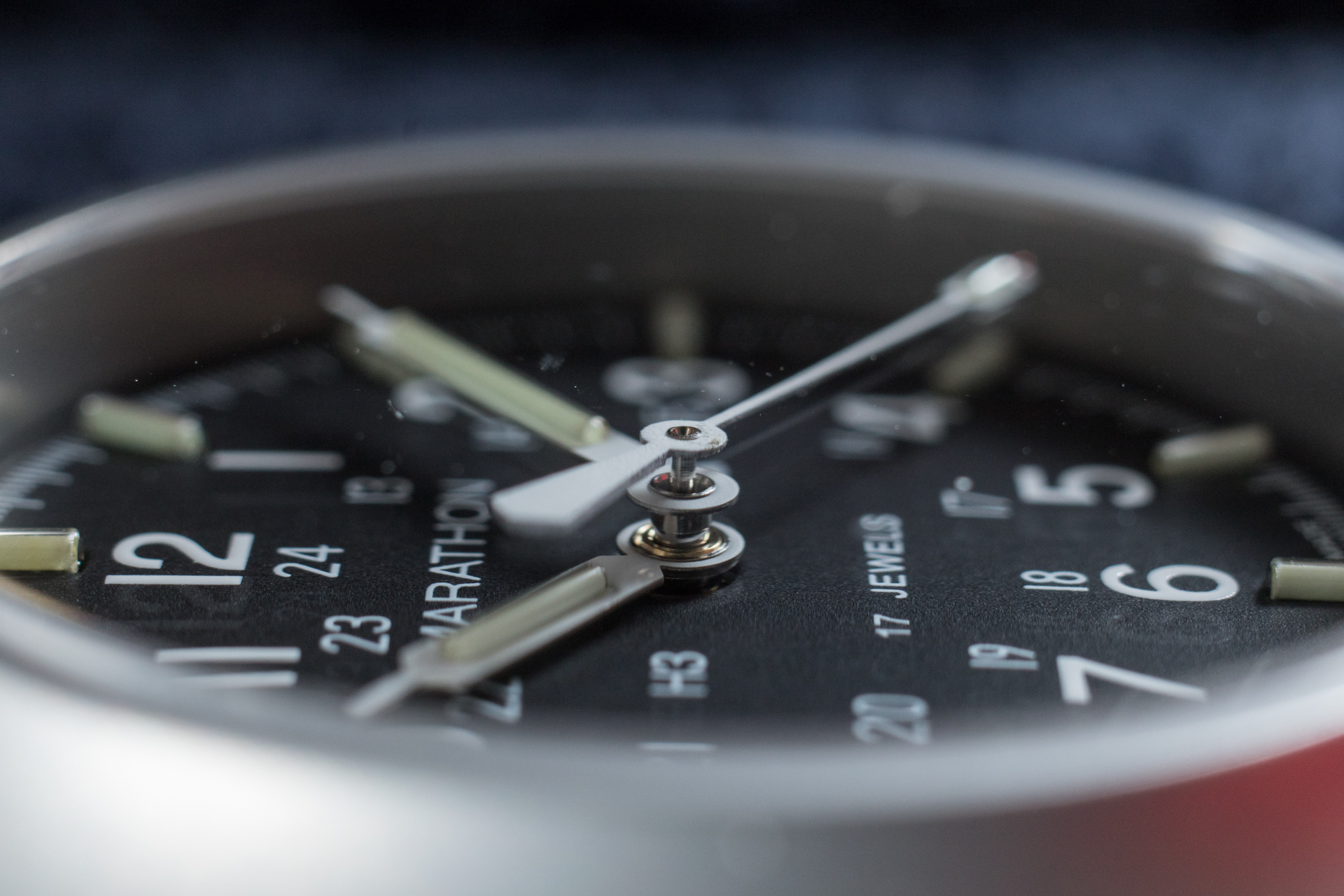
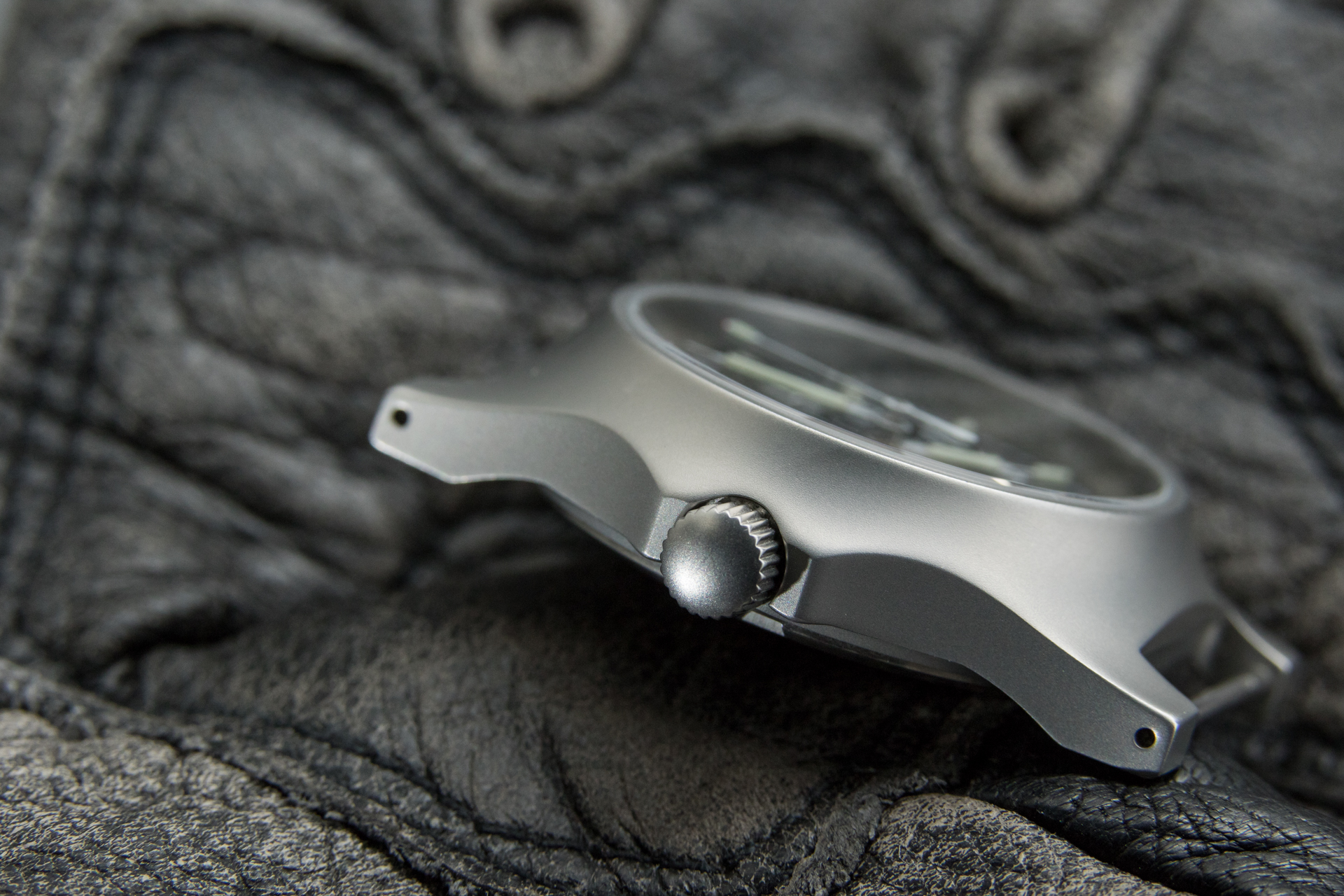
The case itself is a tall 11mm with the height of the almost flush sapphire crystal; taller than you’d expect from a simple three hander at 39mm in diameter. Part of this has to do with the tritium gas tubes that are embedded into the dial and integrated into the hour and minutes hands. The seconds hand is also jeweled with a small tritium gas tube. Because of the tight tolerances between all three hands, Marathon had to space them out further apart to ensure the tritium tubes don’t hit or rub against each other as they spin around the dial.
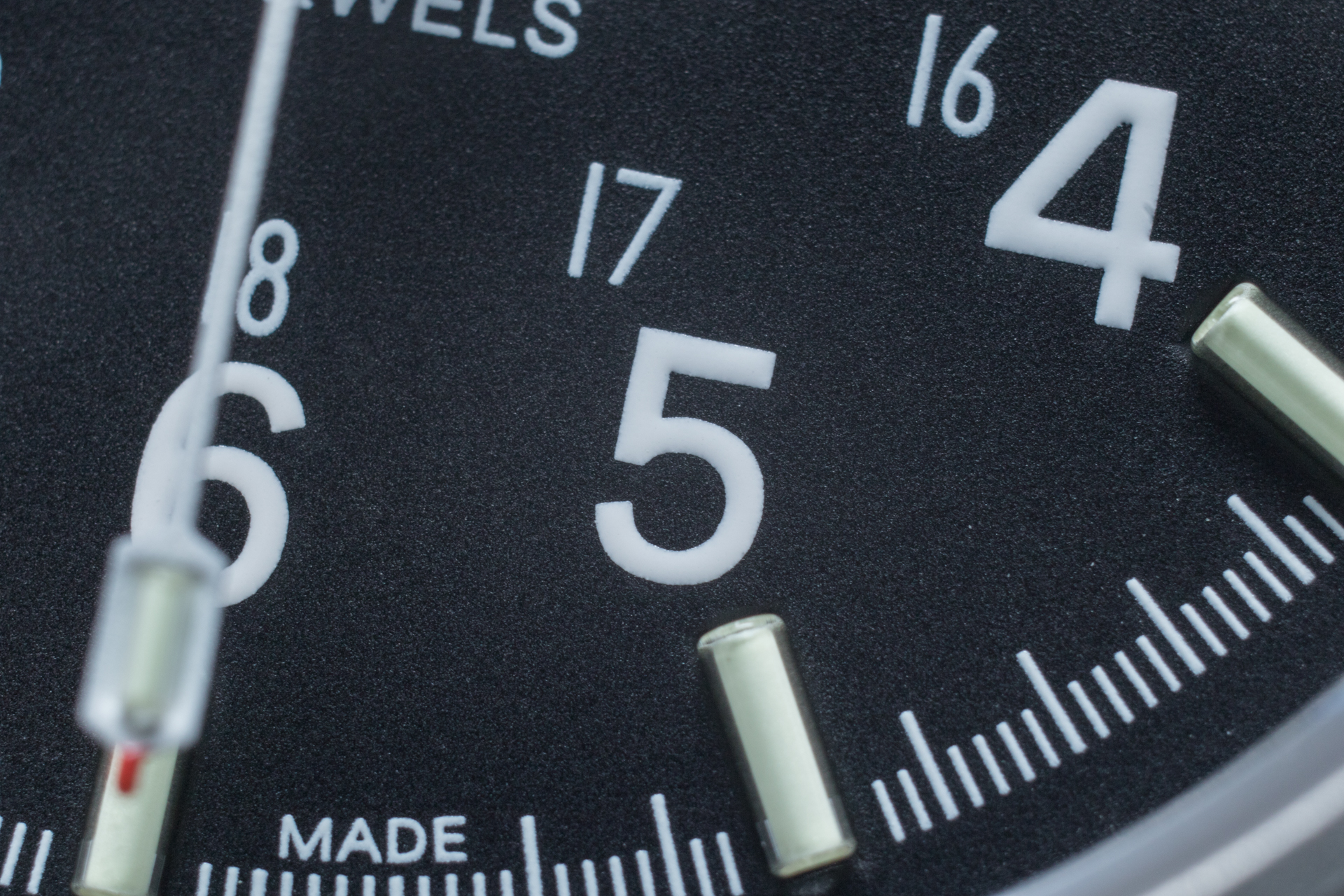
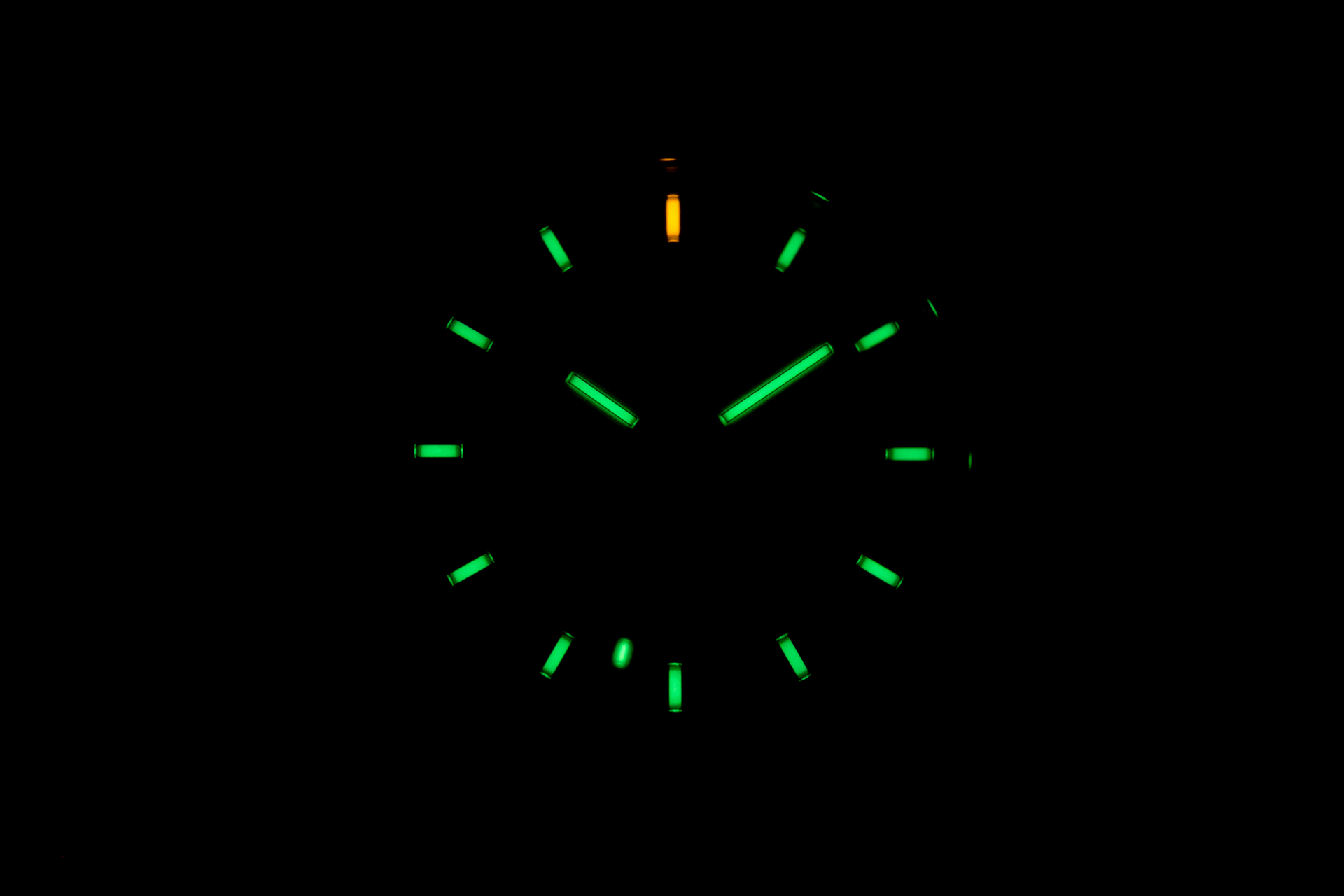
Originally, the GG-W-113 had the tritium applied to dial markers as a liquid form. The new GPM gets an update and uses gas tubes instead of just the tritium application, and while Marathon isn’t the only brand to use this type of lume, the execution on this watch looks clean and legible during the day, and especially during the night. I enjoyed being able to look at the dial and always having consistent illumination in all types of dimly lit environments. Other small details like the 12 o’clock marker glowing orange against the 11 other green markers and the red tipped seconds hand all added to its utilitarian feel.
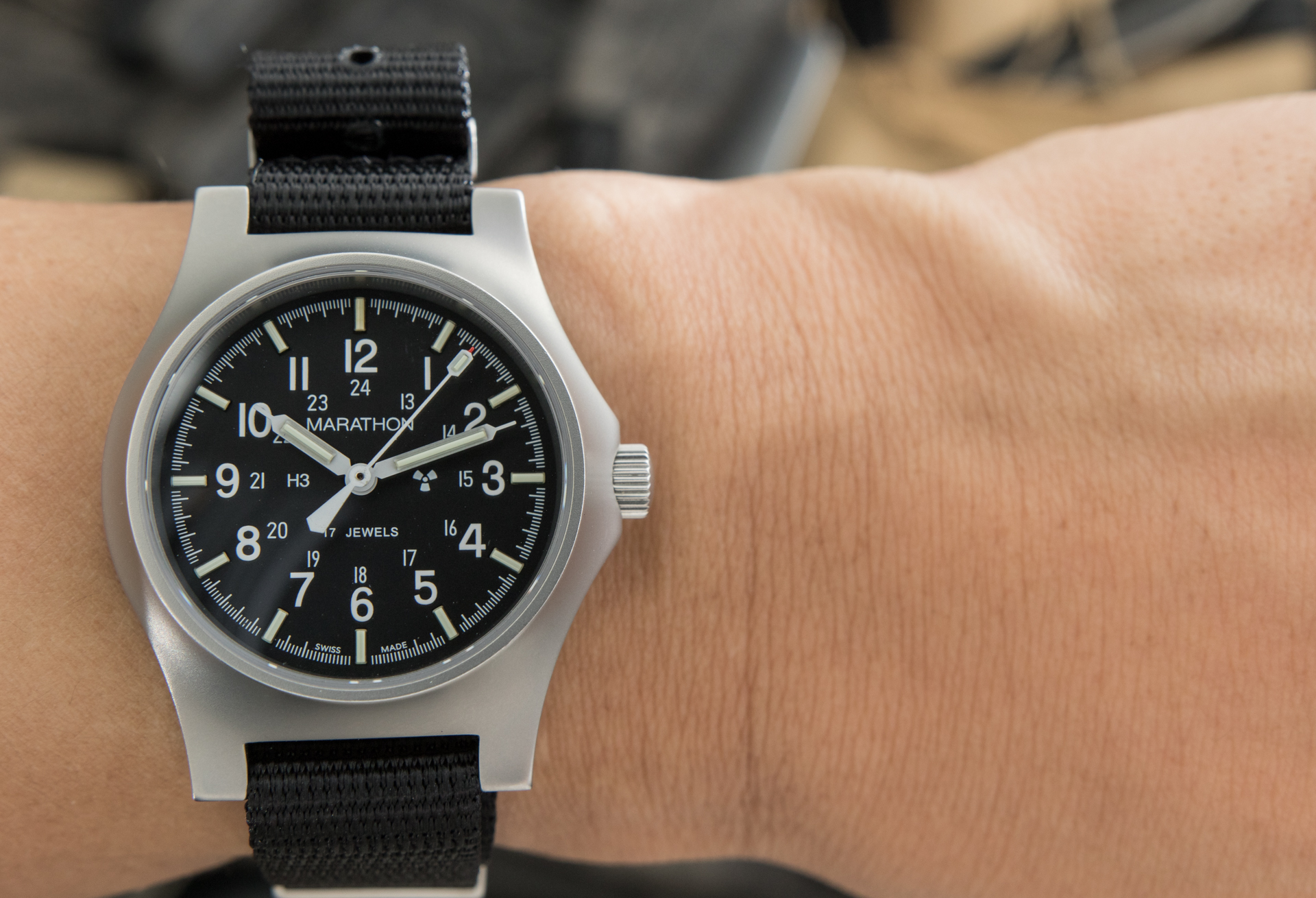
Legibility is always a concern for me when it comes to watch faces because some designs feel like they’re intentionally trying to make it difficult. This isn’t the case with the GPM, as decades of design revisions, military influence, and straight up practicality dictated the font and size of the numbers and dial markers. On first glance, the dial seems a bit busy, but I like to call it “Busy-clean.” The dial has 12-hour markers as well as 24-hour markers, a minutes track, Marathon logo, jewels indication, and two radioactive symbols, all in about a 30mm dial face. That’s a lot of information yet, never once did I feel like it was cluttered or hard to read.

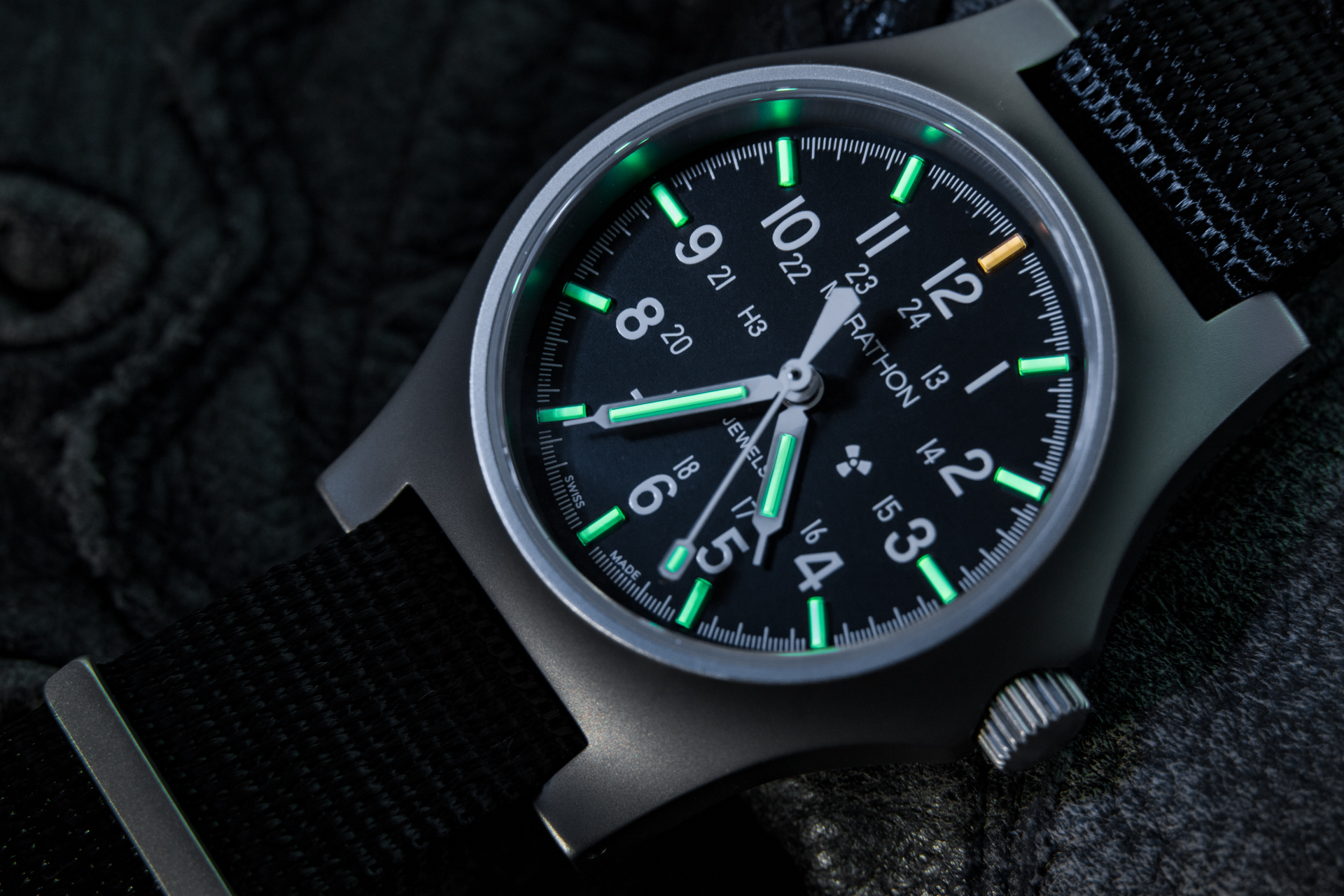
While on the topic of legibility and function, and I know this isn’t a frequently asked question by watch enthusiasts, but where’s the date window? When it comes to form, having the clean symmetry of a no-date dial is beautiful, but if you’re going to be wearing this on the daily, it’d be nice to know what day it is. I would have been okay with the “H3” removed entirely and the radioactive symbol moved to the 9 o’clock position to accommodate space for a date window at the 3 o’clock position. But, the mil-spec philosophy can partly be the cause for this.
In standard trim, it comes with a thick black nylon Zulu strap with a black Marathon branded tongue and buckle. For most of the review, I wore the stock black Zulu as it did the job well and I never felt the need to change it out. That being said, once I did need to change it out for aesthetic reasons, like coordinating the colors with my manly outfit, I couldn’t go back to the stock strap. I prefer NATO straps and the quality of these straps are excellent and tie the finish and overall look of the watch together as the buckle, tongue, and keepers are all satinized stainless steel pieces.
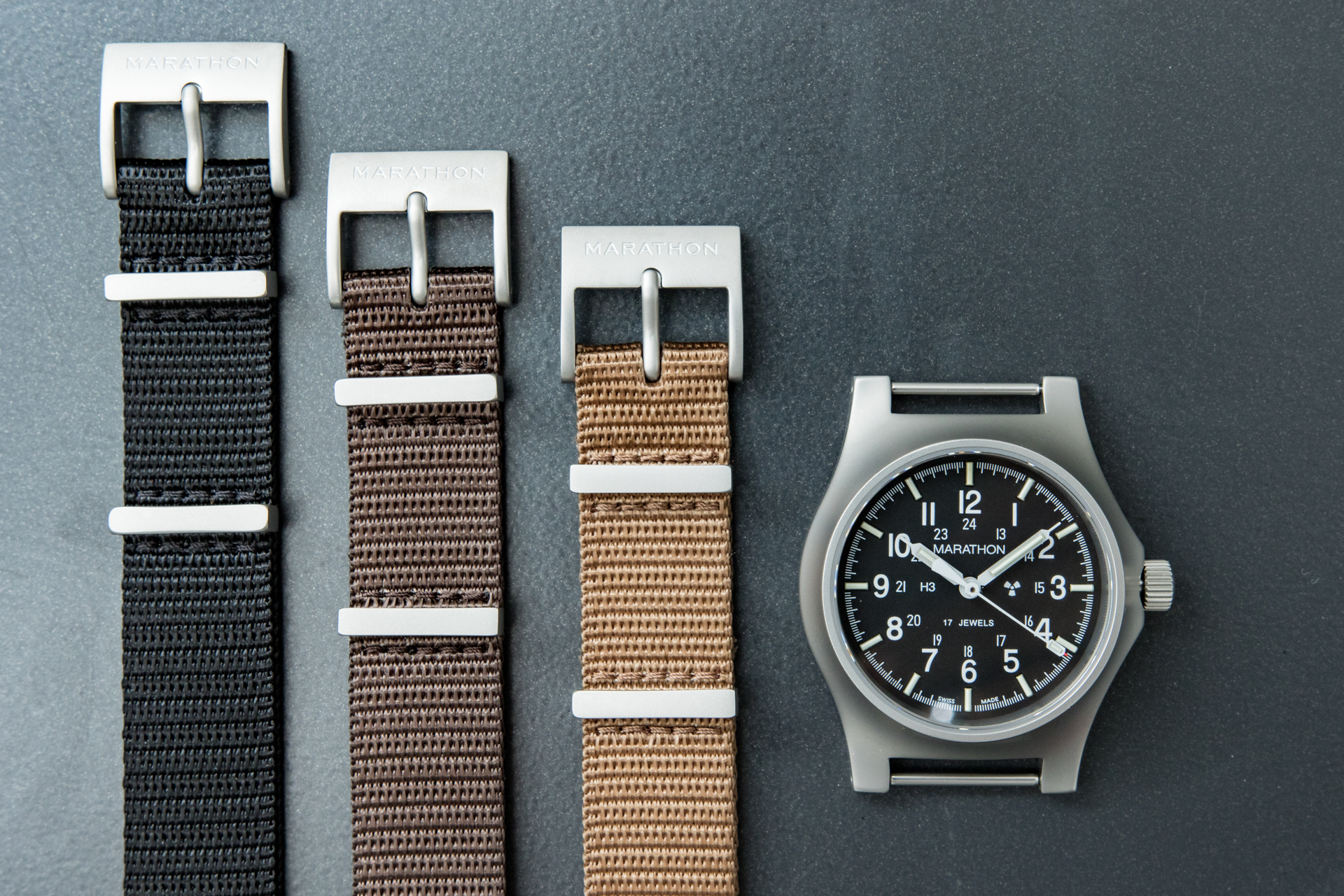
It’s a shame the NATOs are an additional purchase, because they really do take the appearance of the watch to another level. At this price point, I’d be nice to see Marathon include one NATO of your color choosing when purchasing this watch. If you’re a fan of 2 piece straps, deployants, or bracelets, you’ll need to look elsewhere or get custom pieces made as the very unfortunate 16.5mm width will make it harder to find the right fit with aftermarket and third party options. The will ultimately restricts you from buying most off the rack straps; putting on a 16mm leaves a small gap and an 18mm scrunches up between the lugs. Aside from the nuisance of searching for the perfect strap size, the watch case has drilled lugs and robust Swiss made shoulderless spring bars that are easy to remove with a pin removal tool. This method of removing the spring bars is used throughout the Marathon diving line of watches and makes it very easy to remove without much fanfare. Personally, it’s way better than trying to pick away at the spring bar shoulders without scratching the case, case back, and lugs, when done the conventional way.
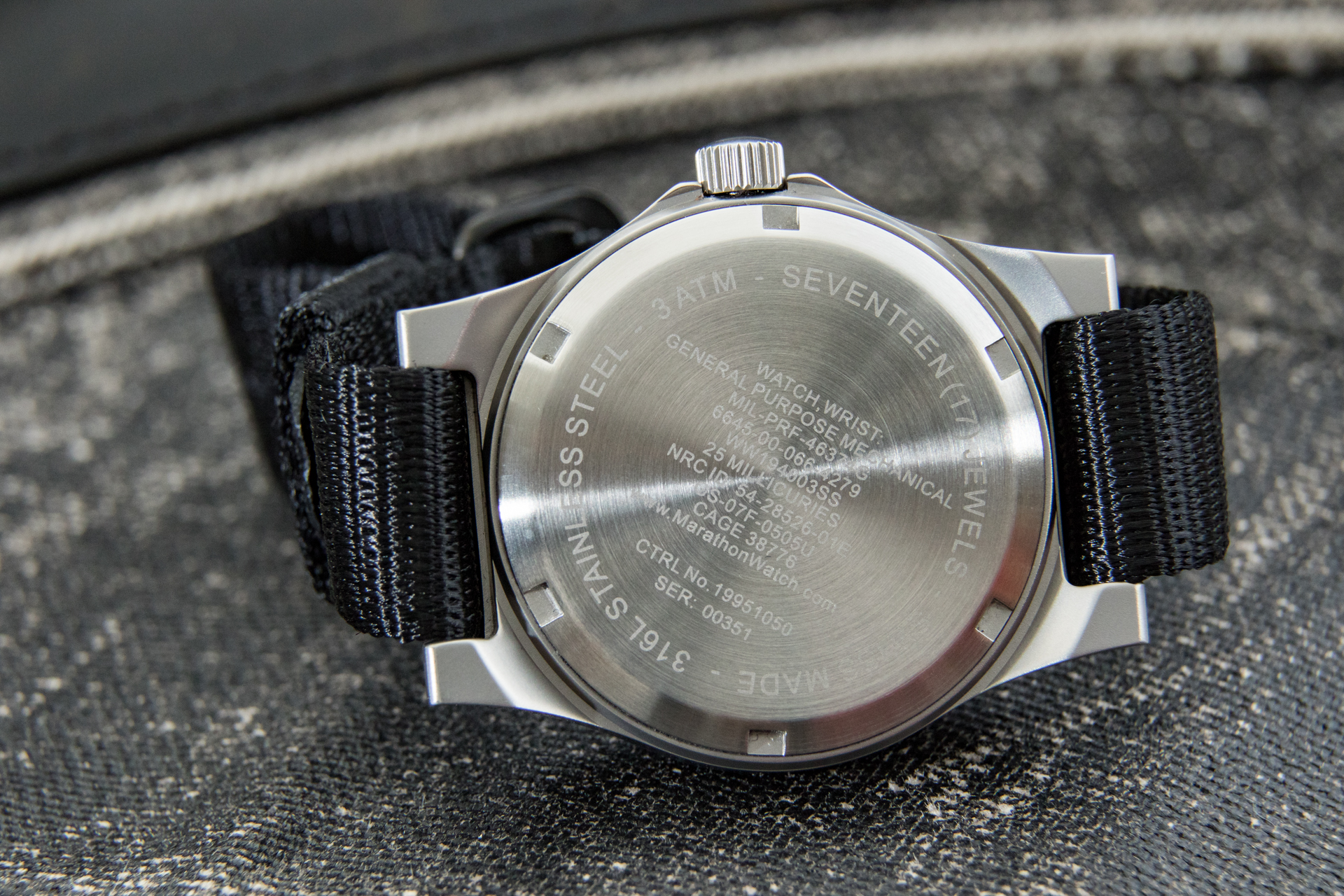

I’m a wear-a-watch-to-do-almost-everything type of watch enthusiast and the Marathon GPM checked off a lot of my watch ownership requirements. I typically don’t baby my watches and do indeed consider them as tools, whether or not they’re made out of precious metals, carbon fibers, or simple plastics. Aside from its shortcomings of not having a self winding movement, smallish looking 39mm size, 16mm lug size, and lack of a date window, it’s a well made piece that has most of what you need and removes a lot of the stuff you don’t need in a pragmatic, form-over-function everyday timepiece.
Retail price for the Marathon General Purpose Mechanical with Tritium (GPM) in stainless steel is $650. The NATO straps with satinized stainless steel hardware are $79.95. marathonwatch.com
Necessary Data
>Brand: Marathon
>Model: General Purpose Mechanical with Tritium (GPM) in Stainless Steel
>Price: $650
>Size: 39mm
>Would reviewer personally wear it: Yes.
>Friends we’d recommend it to first: Someone that likes bang for buck watches, first time mechanical watch owners, and the GTD (Get Things Done) type of individuals.
>Best characteristics of watch: Dial legibility, robust build quality, and tritium “always on” gas tubes.
>Worst characteristic of watch: Looks extra small for a 39mm watch (could wear too small for gents with larger wrists), lack of date window, and lacks self winding movement.

